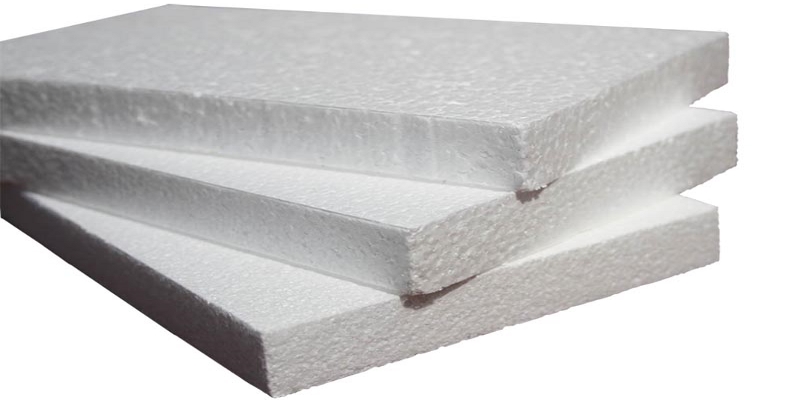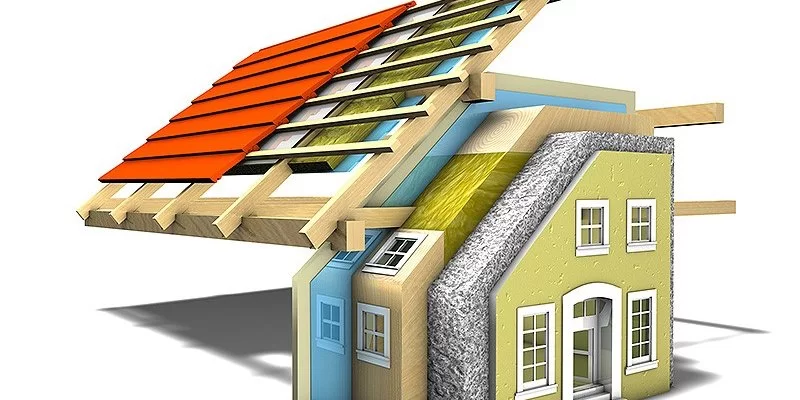
We compare insulation for the house — polyurethane foam or expanded polystyrene
Thermal insulation materials are indispensable for high-quality insulation of any buildings and premises. The market is replete with many products designed specifically for this purpose. But, nevertheless, the most popular for a long time are polystyrene foam and polyurethane foam. What are their features and what are the differences between them? Our experts will advise.
Structural features and material advantages
In order to have a more detailed idea of both heaters and form the correct conclusions when comparing them with each other, it is worth familiarizing yourself with the properties of each in more detail.
Styrofoam

Both heaters have a similar “nature” (they are made from the same feedstock), but at the same time their production technology is different and this determines everything. Styrofoam is known among ordinary consumers as Styrofoam. It belongs to the group of polymers and is obtained by foaming polystyrene.
Insulation is represented by 2 varieties: foamed and extruded. The latter is characterized by a higher density, which significantly improves the thermal insulation properties of the material, and also prolongs its «life».
ON A NOTE. Varieties of expanded polystyrene are difficult to distinguish from each other, but this can be done in a practical way. It is enough to break off a small piece from the foam plate. Foamed at the fracture site, small balls will be visible, while extruded, regular polyhedra will be visible.
Advantages
-
Good thermal conductivity;
-
Ease of installation;
-
Wide variety of sheet thickness;
-
Low price.
Flaws
-
Short service life (about 10 years);
-
Rapid absorption of moisture;
-
Exposure to ultraviolet radiation;
-
Deformation during operation.
Extruded polystyrene foam has a number of other, higher quality advantages:
-
Low level of water absorption;
-
High strength;
-
Durability
ON A NOTE. In no case should polystyrene-based materials be used for internal insulation, since condensation forms between the insulation and the wall in a short period of time, which can lead to accelerated destruction of the structure.
polyurethane foam

In everyday life it is better known as «foam rubber», only in everyday conditions its soft variety is found, and in construction it is hard. The material is characterized by a closed cell structure and the presence of an edge, which greatly simplifies the installation process. And thanks to special components, the insulation is fireproof.
Polyurethane foam is produced by manufacturers in the form of plates or foam applied with special equipment. The second option is actually devoid of typical installation flaws (in particular, «thermal bridges»): the coating will be continuous.
ON A NOTE. Unlike expanded polystyrene, polyurethane foam can be used without a vapor barrier layer, since its water absorption level is very low (15 times lower than that of polystyrene).
Advantages
-
moisture resistance;
-
Low thermal conductivity;
-
Wide operating temperature range;
-
No deformation during the application of insulation;
-
Excellent soundproofing properties;
-
Durability (about 30 years);
-
Environmental Safety.
Flaws
- As for the shortcomings, they are rather formal: high price and instability to ultraviolet radiation.
Comparative characteristics

Thermal conductivity
One of the key factors influencing the final choice of a particular insulation for the house. The best options have low thermal conductivity, while it is allowed to reduce the thickness of the material during installation.
Comparing polystyrene foam and polyurethane foam, there is a clear leadership of the first: 0.04-0.06 W / m * K versus 0.019-0.028 W / m * K. Due to its denser structure, expanded polystyrene retains heat better, but at the same time weighs more (although this criterion is not considered important when choosing a suitable insulation).
Strength
Expanded polystyrene is considered a fairly durable material, which was incorporated into it at the production stage (its structure is very homogeneous). But polyurethane foam is a set of molecules interconnected through exposure to high temperatures.
If we compare in terms that the resistance of expanded polystyrene to bending is 0.4-1 MPa, and polyurethane foam — 0.07-0.2 MPa. It is the mechanical impact that is often the cause of the destruction of the latter — it simply crumbles. Any bend, impact during installation is enough to damage the insulation.
Expanded polystyrene, on the other hand, is distinguished by significant strength, which makes it a suitable option for mounting on load-bearing walls: it is not afraid of temperature surges, deformation, shrinkage, etc.
combustibility
Fire resistance or combustibility is an important indicator, especially when it comes to warming the roof or rooms, houses made of wood. Both considered materials have similar flammability classes: G2 (polyurethane foam) and G3 (polystyrene foam). G2 implies that the material has an average flammability index, G3 — that the material is flammable.
In fact, a high combustibility is a key disadvantage of both heaters. It is for this reason that manufacturers began to massively add flame retardants to the product being created — special components that prevent the ignition of the insulation. If it is created according to technology, in the event of a fire, its attenuation will be almost instantaneous.
Environmental friendliness
Unfortunately, both expanded polystyrene and polyurethane foam are toxic materials. But only when they are exposed to high temperatures: they emit poisonous gas. It is for this reason that both heaters are recommended exclusively for outdoor repair and construction work.
By the way, subject to the installation and operation technology under normal conditions, none of the considered materials poses any danger to human health and the environment.
moisture resistance
Hydrophobicity is one of the key criteria for choosing a heater and should never be ignored. The resistance of a material to moisture indicates how it will be able to withstand moisture during operation. The water absorption index should be minimal, otherwise it threatens to destroy the insulation, increase its weight (this will increase the load on the structure), and lose the main property — thermal insulation.
Our experts conducted a simple but revealing experiment: they immersed sheets of expanded polystyrene and polyurethane foam in water for a day. The first absorbed only 0.2% of the volume of water (a very small indicator), the second — about 2%. Such a significant difference is due to the structure of expanded polystyrene: its closed cells practically do not let water through.
Vapor permeability
The level of vapor permeability also cannot be missed, because it depends on whether additional use of a vapor barrier layer is required. If we talk about polyurethane foam, then its vapor permeability index is approximately 0.05 units, but for polystyrene foam it is actually zero. This suggests that the latter option does not allow steam to pass through, so you don’t have to worry about additional protection (but only if we are talking about “breathing” surfaces).
Soundproofing level
None of the options considered can be called suitable for use as sound insulation. Since the density indicators of both materials are close, they will not have any special differences in the level of sound absorption. If you need to provide a room or house with high-quality sound insulation, we recommend that you additionally use building material specially designed for this purpose.
Shrinkage degree
The tendency to change the original shape is the “Achilles heel” of many heat-insulating materials, and one of these is polyurethane foam. This negative property is especially evident when the insulation is heated: with prolonged exposure to warm air, the plate will begin to deform. You should not use polyurethane foam for the «warm floor» system, and when insulating the facade, you should worry about using plaster with an ultraviolet protection function for wall decoration.
Expanded polystyrene is distinguished by excellent “resistance” to shrinkage: during operation, the material does not change its original shape, regardless of the conditions and installation site.
Mounting Features
And speaking of installation. Both considered heaters can be installed without professional help: the materials are very easy to use and do not require special skills. For the convenience of working with expanded polystyrene, its sides were equipped with side protrusions, which form an integral layer during installation. In addition, they increase the strength of the material and speed up the work process.
Polyurethane foam is mounted using a similar technology, but the process is complicated by the absence of the “sides” described above: when working with it, you will have to process the joints with adhesive or foam.
Добавить комментарий
Для отправки комментария вам необходимо авторизоваться.